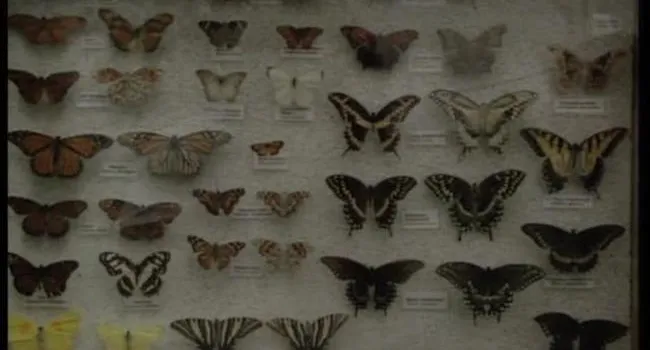The South Carolina Aquarium, located in Charleston, South Carolina, is an impressive place to visit. Operated by a nonprofit organization, the aquarium is 40th in size and fifth in biodiversity.
A journey through the aquarium takes viewers across South Carolina – from the mountains to the sea. Exhibits include a forest habitat, a salt marsh, and a 350,000-gallon ocean tank, and are home to all types of animals associated with aquatics, such as spiders, fishes, frogs, and mammals. To add to the aquarium’s collection, curators trade with other zoos and purchase from wholesales. All animals are quarantined for 30 days, during which time they receive medicine before they are moved to a final exhibit.
The water used in the aquarium comes from the Folly River. It is filtered and pumped to the exhibits. A life support system filters the water constantly to keep it free from debris.
The aquarium’s design team, from Boston, Massachusetts, and Tucson, Arizona, looked at actual habitats in South Carolina. Some of the habitats in the aquarium were made of cement and epoxy and painted by artists to look realistic. An animal care staff cares for every animal every day. It consists of bird specialists, herpetologists, aquarists, and mammal specialists. There are more than 10,000 mouths to feed daily!
Horticulturists scout the plants used in displays for disease and see to their general upkeep. Native materials from the mountains to the coast, the plants in the open-air exhibits are from local nurseries. Planters have cooling coils for mountain plants and misters so the plants won’t die in the hot Charleston summers. Grasses and palmettos are planted in the salt marsh display.
Standards
- 3.2.2.ER Identify and analyze the ways people interact with the physical environment in different regions of the state, the country, and the world.
- Life Science: Environments and Habitats
- 3.L.5 The student will demonstrate an understanding of how the characteristics and changes in environments and habitats affect the diversity of organisms.
- 3.L.5A The characteristics of an environment (including physical characteristics, temperature, availability of resources, or the kinds and numbers of organisms present) influence the diversity of organisms that live there. Organisms can survive only in...
- 3.L.5B When the environment or habitat changes, some plants and animals survive and reproduce, some move to new locations, and some die. Fossils can be used to infer characteristics of environments from long ago.
- 3.L.5 The student will demonstrate an understanding of how the characteristics and changes in environments and habitats affect the diversity of organisms.
- Earth Science: Changes in Landforms and Oceans
- 5.E.3 The student will demonstrate an understanding of how natural processes and human activities affect the features of Earth’s landforms and oceans.
- 5.E.3A Some of the land on Earth is located above water and some is located below the oceans. The downhill movement of water as it flows to the ocean shapes the appearance of the land. There are patterns in the location and structure of landforms found...
- 5.E.3B Earth’s oceans and landforms can be affected by natural processes in various ways. Humans cannot eliminate natural hazards caused by these processes but can take steps to reduce their impacts. Human activities can affect the land and ocean...
- 5.E.3B.2 Develop and use models to explain the effect of the movement of ocean water (including waves, currents, and tides) on the ocean shore zone (including beaches, barrier islands, estuaries, and inlets).
- 5.E.3B.3 Construct scientific arguments to support claims that human activities (such as conservation efforts or pollution) affect the land and oceans of Earth.
- 5.E.3B.4 Define problems caused by natural processes or human activities and test possible solutions to reduce the impact on landforms and the ocean shore zone.
- 5.E.3 The student will demonstrate an understanding of how natural processes and human activities affect the features of Earth’s landforms and oceans.
- Ecology: Interactions of Living Systems and the Environment
- 7.EC.5 The student will demonstrate an understanding of how organisms interact with and respond to the biotic and abiotic components of their environments.
- 7.EC.5A In all ecosystems, organisms and populations of organisms depend on their environmental interactions with other living things (biotic factors) and with physical (abiotic) factors (such as light, temperature, water, or soil quality). Disruptions...
- 7.EC.5A.1 Develop and use models to describe the characteristics of the levels of organization within ecosystems (including species, populations, communities, ecosystems, and biomes).
- 7.EC.5A.3 Analyze and interpret data to predict changes in the number of organisms within a population when certain changes occur to the physical environment (such as changes due to natural hazards or limiting factors).
- 7.EC.5B Organisms in all ecosystems interact with and depend up on each other. Organisms with similar needs compete for limited resources. Food webs and energy pyramids are models that demonstrate how energy is transferred within an ecosystem.
- 7.EC.5B.3 Analyze and interpret data to predict how changes in the number of organisms of one species affects the balance of an ecosystem.
- 7.EC.5B.4 Define problems caused by the introduction of a new species in an environment and design devices or solutions to minimize the impact(s) to the balance of an ecosystem.
- 7.EC.5A In all ecosystems, organisms and populations of organisms depend on their environmental interactions with other living things (biotic factors) and with physical (abiotic) factors (such as light, temperature, water, or soil quality). Disruptions...
- 7.EC.5 The student will demonstrate an understanding of how organisms interact with and respond to the biotic and abiotic components of their environments.



































